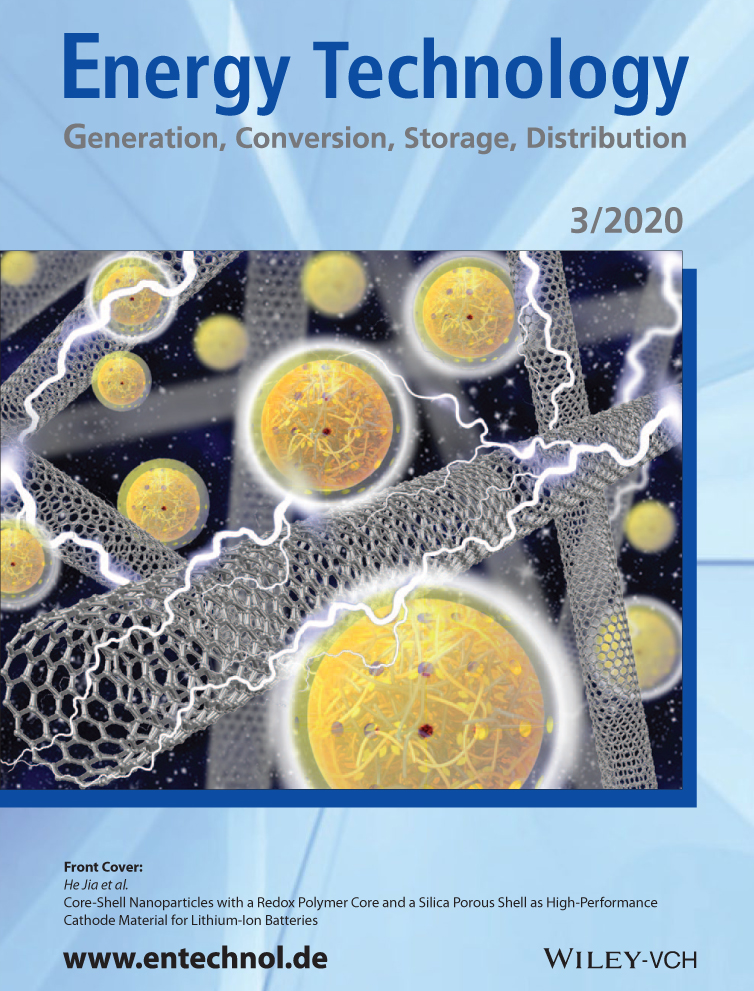An Aqueous Battery–Pseudocapacitor Hybrid Capacitor Based on Conductive Core–Shell NiCoSe2@Co9Se8 Hollow Nanospheres Hybridized with Nanoscale Ru0.41In0.59Oy
Abstract
It is always a huge challenge to explore advanced aqueous supercapacitors with both high energy and high power densities. Herein, conductive NiCoSe2@Co9Se8 hollow nanospheres (HNSs) are solvothermally synthesized, where the Co9Se8 nanosheets uniformly surround hollow NiCoSe2 core. The resultant NiCoSe2@Co9Se8 HNSs are further exploited as a positive electrode for designing a aqueous battery–pseudocapacitor hybrid device by combining it with the high ionic/electronic conductive Ru0.41In0.59Oy nanoparticles as the negative electrode. Due to synergetic contributions from the two involved electrodes, the assembled Ru0.41In0.59Oy//NiCoSe2@Co9Se8 hybrid capacitor is endowed with a wide-voltage window from 0.0 to 1.5 V, and exhibits a large specific capacitance of ≈206 F g−1 at 0.5 A g−1 and excellent cyclic durability with ≈10% capacitance decay after 5000 consecutive cycles, together with a high energy density of ≈50 Wh kg−1 at a specific power of 3750 W kg−1.
Conflict of Interest
The authors declare no conflict of interest.




